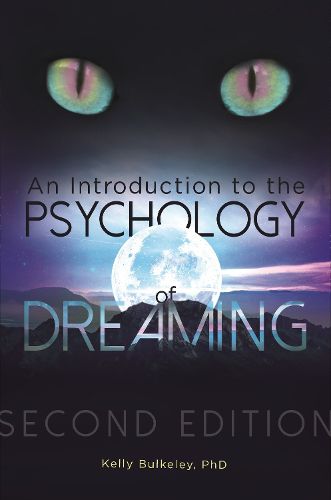Readings Newsletter
Become a Readings Member to make your shopping experience even easier.
Sign in or sign up for free!
You’re not far away from qualifying for FREE standard shipping within Australia
You’ve qualified for FREE standard shipping within Australia
The cart is loading…






Introducing students at all levels to the key concepts of modern dream psychology, this concise book provides an overview of major theories regarding the formation, function, and interpretation of dreams.
Why do people dream, and what do dreams mean? What do the most recent neuroscientific research and studies of patterns in dream content reveal about the functionality of dreams? How do the ideas of earlier generations of dream psychologists continue to influence the research of psychologists today? An Introduction to the Psychology of Dreaming covers all major theories in dream psychology from 1900 to the present day. It provides readers with a unique resource that focuses specifically on this lineage of research in dream psychology and is concise and accessibly written.
Each chapter of the book analyzes a particular theory of dream psychology in terms of three basic questions: How are dreams formed? What functions do dreams serve? How can dreams be interpreted? By examining each theorist’s answers to these questions, readers can clearly see how dream psychology theorists have both incorporated concepts from previous researchers and developed new ideas of their own. A breadth of psychological approaches is considered, from Freud and Jung to contemporary brain studies, giving readers an appreciation of the wide range of theories regarding this fascinating area of study.
Explains the historical development of dream psychology across a century of thought and research, from Freudian psychoanalysis to modern neuroscience
Provides a clear template for analyzing each theory of dream psychology in terms of how it answers the three basic questions of formation, function, and interpretation
Encourages readers to look carefully at their own dreams as a legitimate source of insight into the dreaming process
Represents an ideal resource for undergraduate students in introductory psychology classes who need a solid understanding of the psychology of dreaming
$9.00 standard shipping within Australia
FREE standard shipping within Australia for orders over $100.00
Express & International shipping calculated at checkout
Stock availability can be subject to change without notice. We recommend calling the shop or contacting our online team to check availability of low stock items. Please see our Shopping Online page for more details.
Introducing students at all levels to the key concepts of modern dream psychology, this concise book provides an overview of major theories regarding the formation, function, and interpretation of dreams.
Why do people dream, and what do dreams mean? What do the most recent neuroscientific research and studies of patterns in dream content reveal about the functionality of dreams? How do the ideas of earlier generations of dream psychologists continue to influence the research of psychologists today? An Introduction to the Psychology of Dreaming covers all major theories in dream psychology from 1900 to the present day. It provides readers with a unique resource that focuses specifically on this lineage of research in dream psychology and is concise and accessibly written.
Each chapter of the book analyzes a particular theory of dream psychology in terms of three basic questions: How are dreams formed? What functions do dreams serve? How can dreams be interpreted? By examining each theorist’s answers to these questions, readers can clearly see how dream psychology theorists have both incorporated concepts from previous researchers and developed new ideas of their own. A breadth of psychological approaches is considered, from Freud and Jung to contemporary brain studies, giving readers an appreciation of the wide range of theories regarding this fascinating area of study.
Explains the historical development of dream psychology across a century of thought and research, from Freudian psychoanalysis to modern neuroscience
Provides a clear template for analyzing each theory of dream psychology in terms of how it answers the three basic questions of formation, function, and interpretation
Encourages readers to look carefully at their own dreams as a legitimate source of insight into the dreaming process
Represents an ideal resource for undergraduate students in introductory psychology classes who need a solid understanding of the psychology of dreaming